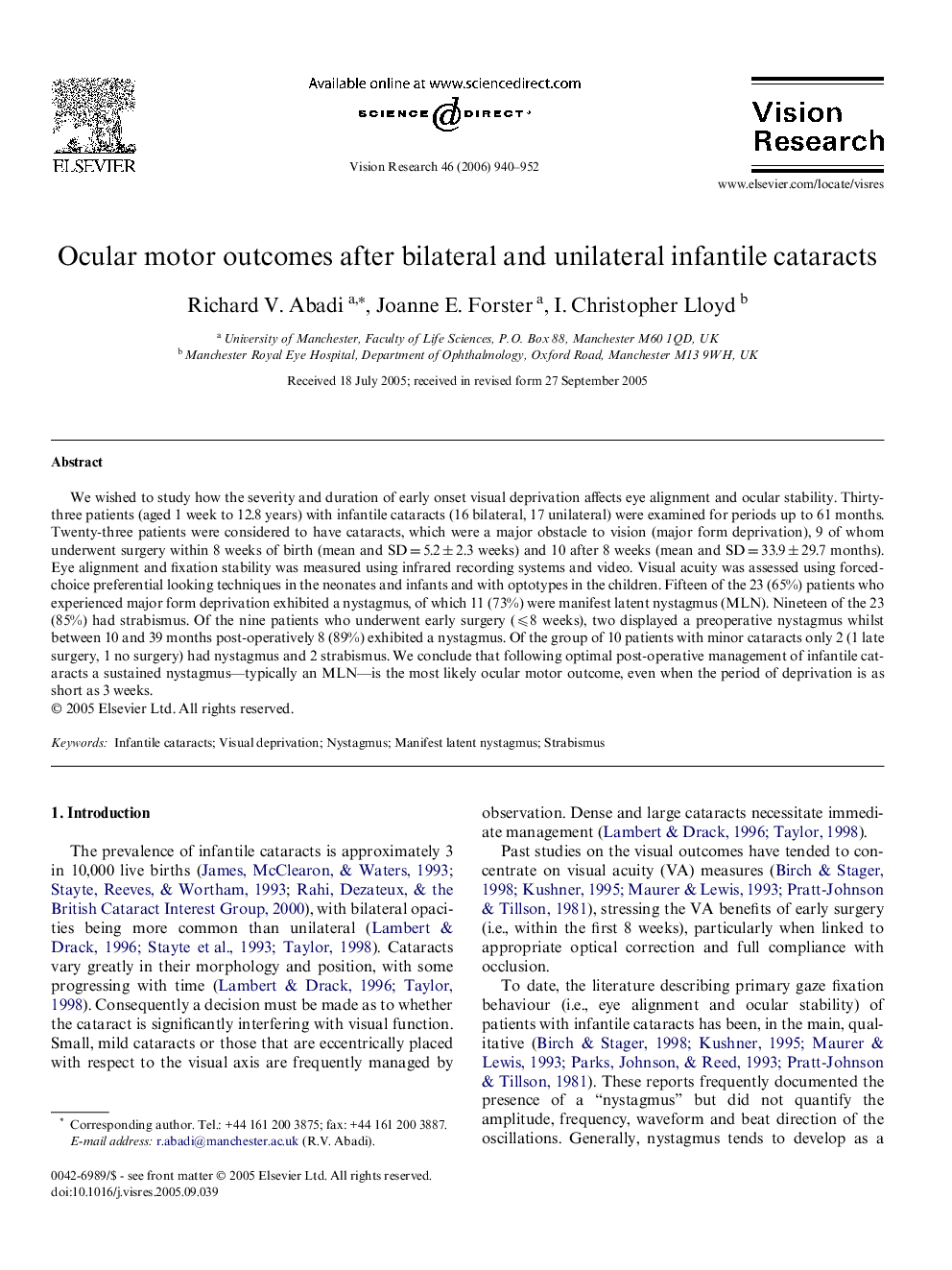| کد مقاله | کد نشریه | سال انتشار | مقاله انگلیسی | نسخه تمام متن |
|---|---|---|---|---|
| 4036352 | 1603246 | 2006 | 13 صفحه PDF | دانلود رایگان |

We wished to study how the severity and duration of early onset visual deprivation affects eye alignment and ocular stability. Thirty-three patients (aged 1 week to 12.8 years) with infantile cataracts (16 bilateral, 17 unilateral) were examined for periods up to 61 months. Twenty-three patients were considered to have cataracts, which were a major obstacle to vision (major form deprivation), 9 of whom underwent surgery within 8 weeks of birth (mean and SD = 5.2 ± 2.3 weeks) and 10 after 8 weeks (mean and SD = 33.9 ± 29.7 months). Eye alignment and fixation stability was measured using infrared recording systems and video. Visual acuity was assessed using forced-choice preferential looking techniques in the neonates and infants and with optotypes in the children. Fifteen of the 23 (65%) patients who experienced major form deprivation exhibited a nystagmus, of which 11 (73%) were manifest latent nystagmus (MLN). Nineteen of the 23 (85%) had strabismus. Of the nine patients who underwent early surgery (⩽8 weeks), two displayed a preoperative nystagmus whilst between 10 and 39 months post-operatively 8 (89%) exhibited a nystagmus. Of the group of 10 patients with minor cataracts only 2 (1 late surgery, 1 no surgery) had nystagmus and 2 strabismus. We conclude that following optimal post-operative management of infantile cataracts a sustained nystagmus—typically an MLN—is the most likely ocular motor outcome, even when the period of deprivation is as short as 3 weeks.
Journal: Vision Research - Volume 46, Issues 6–7, March 2006, Pages 940–952